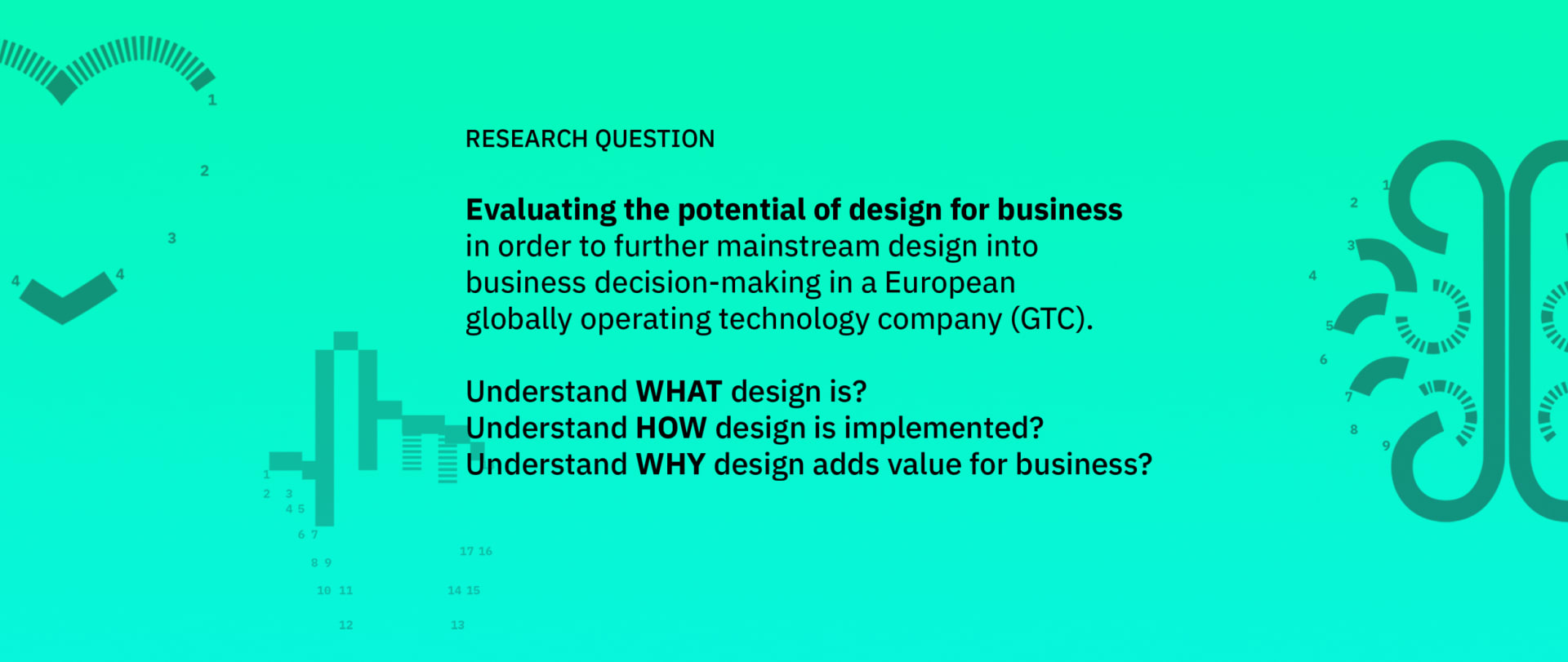
- CollegeCentral Saint Martins
- CourseMaster of Business Administration (MBA)
- Graduation year2021
The purpose of this study is to explore the awareness and potential of design for business in a European globally operating technology company (GTC).
Using a combination of academic literature review and qualitative interviews, the author has employed a case study approach to analyse the connections between academic research, the views of interview participants and the design history of the company.
In doing so, the author identified six dimensions which influence business success through design: competitive advantage, innovation, human capital, customer experience, digital and technological capabilities and implementing change. Furthermore, two prerequisites were defined in order to utilise design within these dimensions: mode of business thinking, awareness of design as a mandatory combination of design, design thinking, design management.
This paper is the first discussing the latest scientific findings in the context of GTC and thus makes them more tangible. This research brings the topic right up to date with GTC’s current actions and measures, aiming to promote general understanding of design, raise awareness of its benefits and provide insights into how these can be better utilised for GTC based on a selection of current business challenges.
Final work
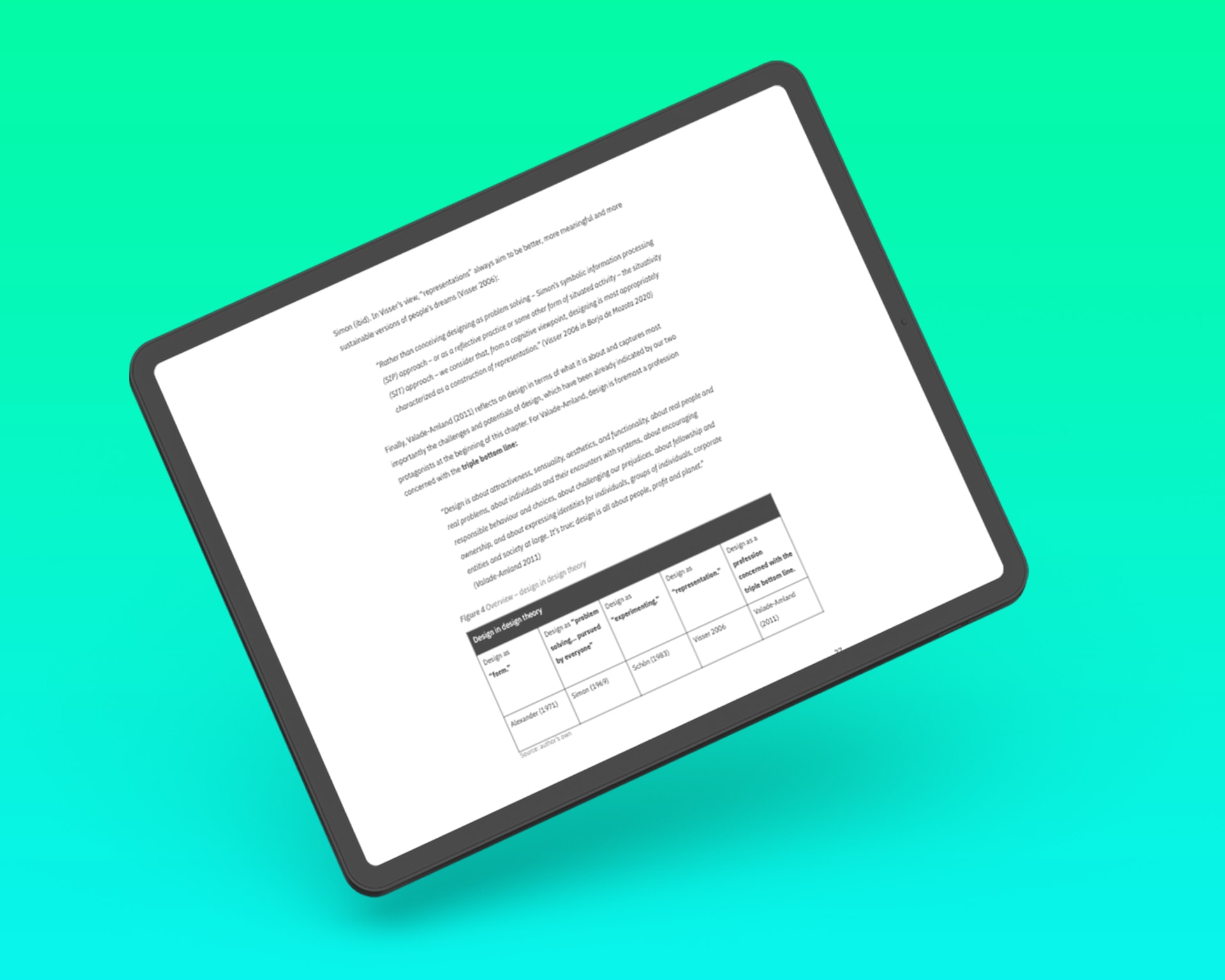
What is design?
The second chapter discusses the concept of design in terms of its different perceptions and connotations. Being criticised as poorly defined, on the one hand, denies its diversity as a rich subject adding to the triple bottom line (Valade-Amland 2011) on the other. The long-standing consideration of design as an object or a form of art limits the potential of design to mere aesthetics, while design offers much greater potential if understood as a problem-solver (Schön 1983), striving under constraints (Eames 1969) and inventing and transforming what is not there yet (Visser 2006).
. . . . . .
Eames, C., Eames, R. (1969). What Is Your Definition of “Design,” Monsieur Eames? A Vitra Anecdote. Available at: https://www.vitra.com/en-us/magazine/details/what-is-your-definition-of-design-monsieur-eames (Accessed: 10 January 2021)
Schön, D.A. (1983). The Reflective Practitioner: How Professionals Think in Action. Basic Books
Valade-Amland, S. (2011). Design for People, Profit and Planet. DMI Review, 22, no. 1.
Visser, W. (2006). Designing as Construction of Representations: A Dynamic Viewpoint in Cognitive Design Research. Human–Computer Interaction 21, no. 1.
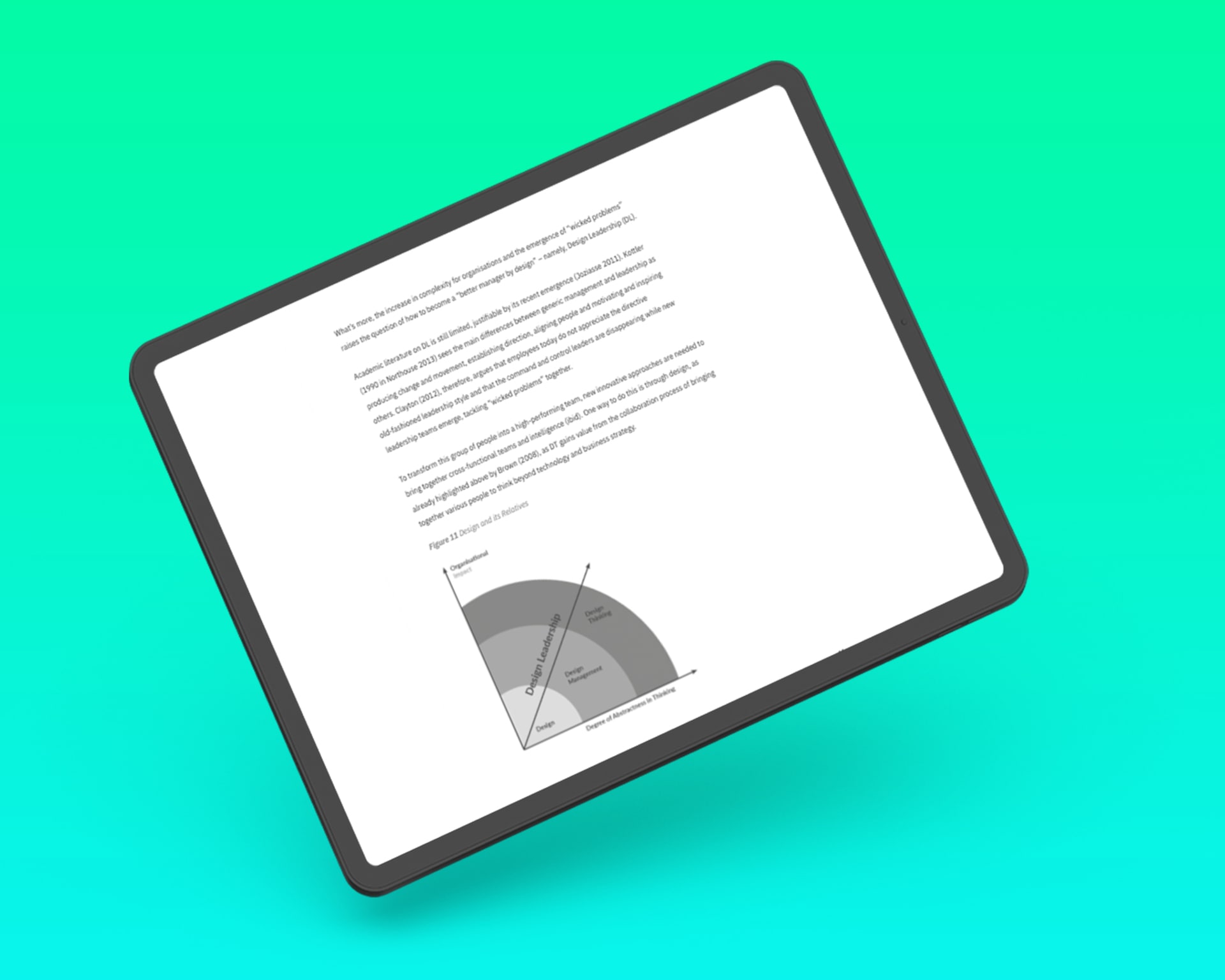
How to manage design?
Design Management (DM) is discussed in the third chapter – as it has emerged to bridge the gap between design and business, as both sciences come from different places, operating in their silos. It also highlights the highly complex and ambiguous space in which companies and leaders find themselves today. Here it becomes clear that companies can learn from design to innovate, work and lead differently. Within this process - and only in combination - design leadership helps establish a vision for the future, design makes the intangible tangible, design thinking inspires by using design methods in a human-centred approach, fosters collaboration and helps organisations to be more innovative, while DM enables the success of the vision by providing the right tools (Borja de Mozota et al. 2020).
. . . . . .
Borja de Mozota, B., Valade-Amland, S. (2020) Design: A Business Case. Thinking, Leading and Managing by Design. Business Expert Press

Why design in business?
From examining the Lockwood framework, several studies, reports and cases, it can be said that design adds value that can be measured according to ten categories – varying from time-to-market and cost savings to customer satisfaction and the ability to influence preferences. Measuring design value in terms of gross margin, net margin, ROI or brand equity is evident in the Design Value Index (DVI, image) or the Business Value of Design report. How design creates competitive advantage has been highlighted by providing deeper insights on measures implemented by SAP and IBM.
Furthermore, current business challenges (Innovation, Human Capital, Digital and technological capabilities, Customer Experience) and implementing change have been discussed in relation to how design adds value.
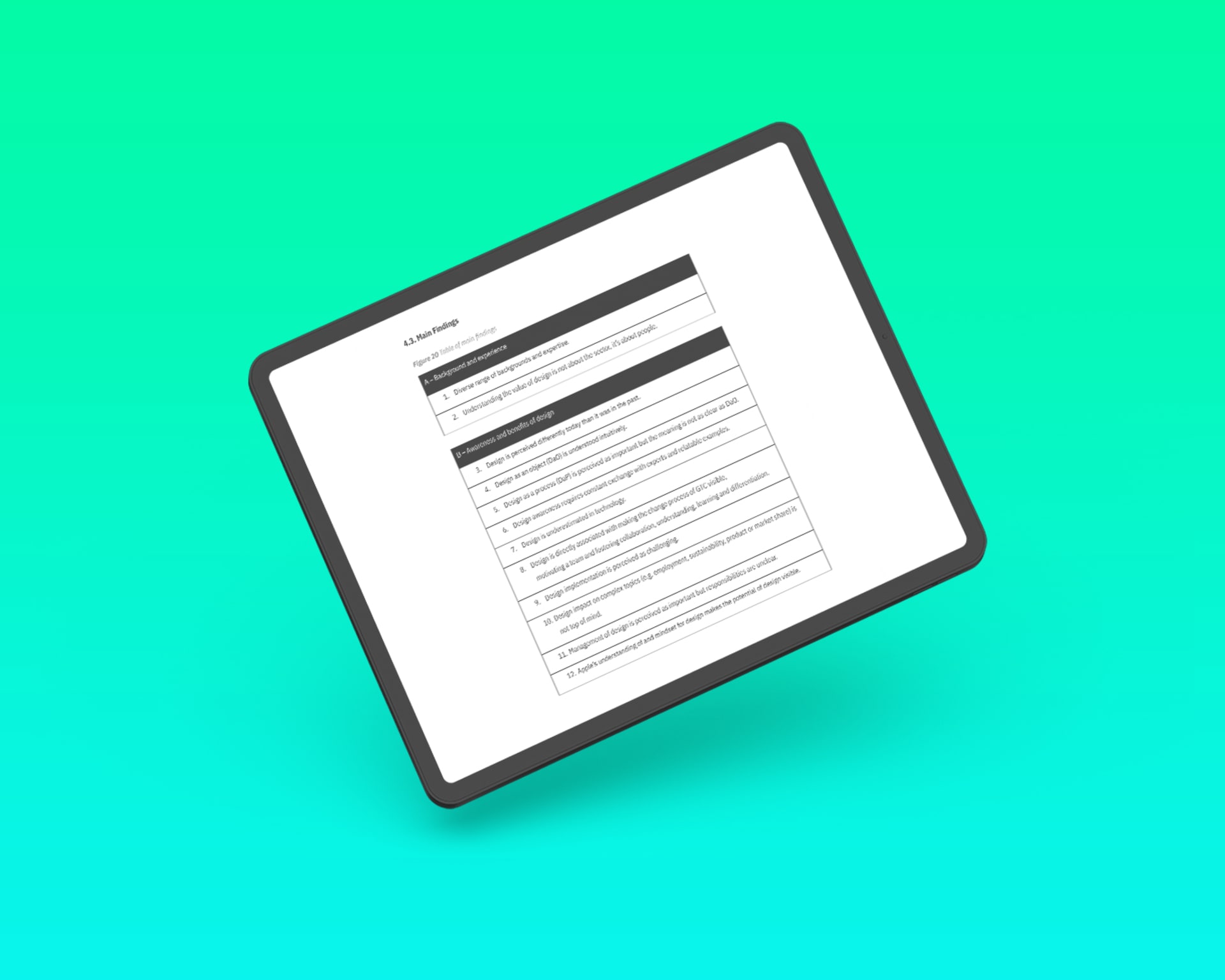
Research findings
The chapter "Research findings" starts by introducing the interview participants and their backgrounds. It then examines 20 findings under the following headings:
- Background and experience
- Awareness and benefits of design
- Design process and planning
- Design expertise
In total, 21 individual interviews were conducted, 19 of which were conducted via online video telephony, one via phone and one face to face. 17 of the participants were based in Europe, two participants were in the US and two were in the UK.
Research and process
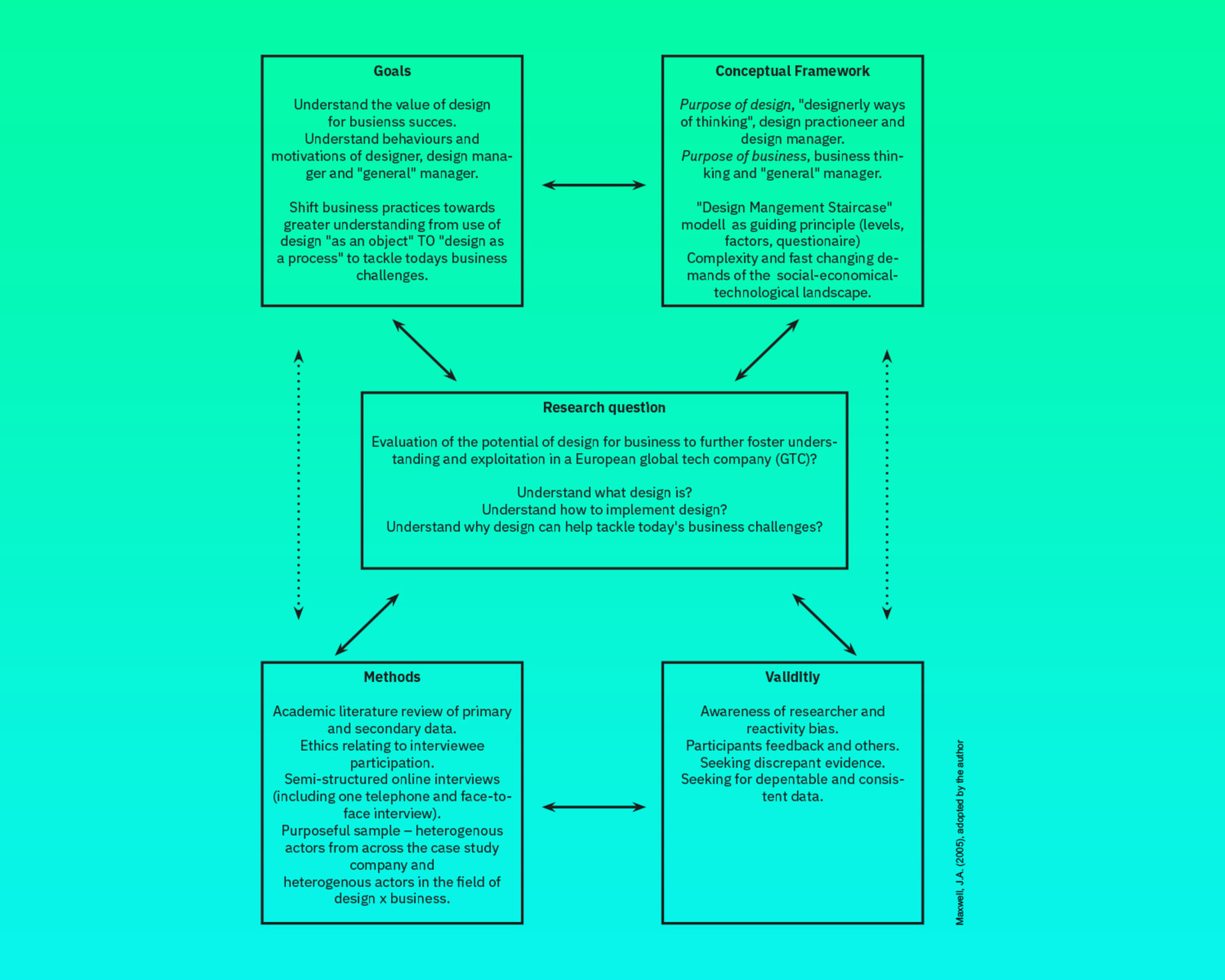
The graphic below was adopted by Maxwell (2012) to gain a clearer picture of the interdependence and most important relationships between the different parts of the research design in a non-linear rather than a linear approach. Thinking about the research in an interactive manner facilitated identifying the research questions, goals and methods to explore the questions, as well as defining the proper conceptual framework and parameters to ensure validity – the “design-in-use” rather than an “abstraction or plan” of the research design (cited in Maxwell 2012).
. . . . . .
Maxwell, J, (2012). Qualitative Research Design : An Interactive Approach. Available at: https://www.researchgate.net/publication/43220402_Qualitative_Research_Design_An_Interactive_Approach_JA_Maxwell. (Accessed: 10 March 2021)
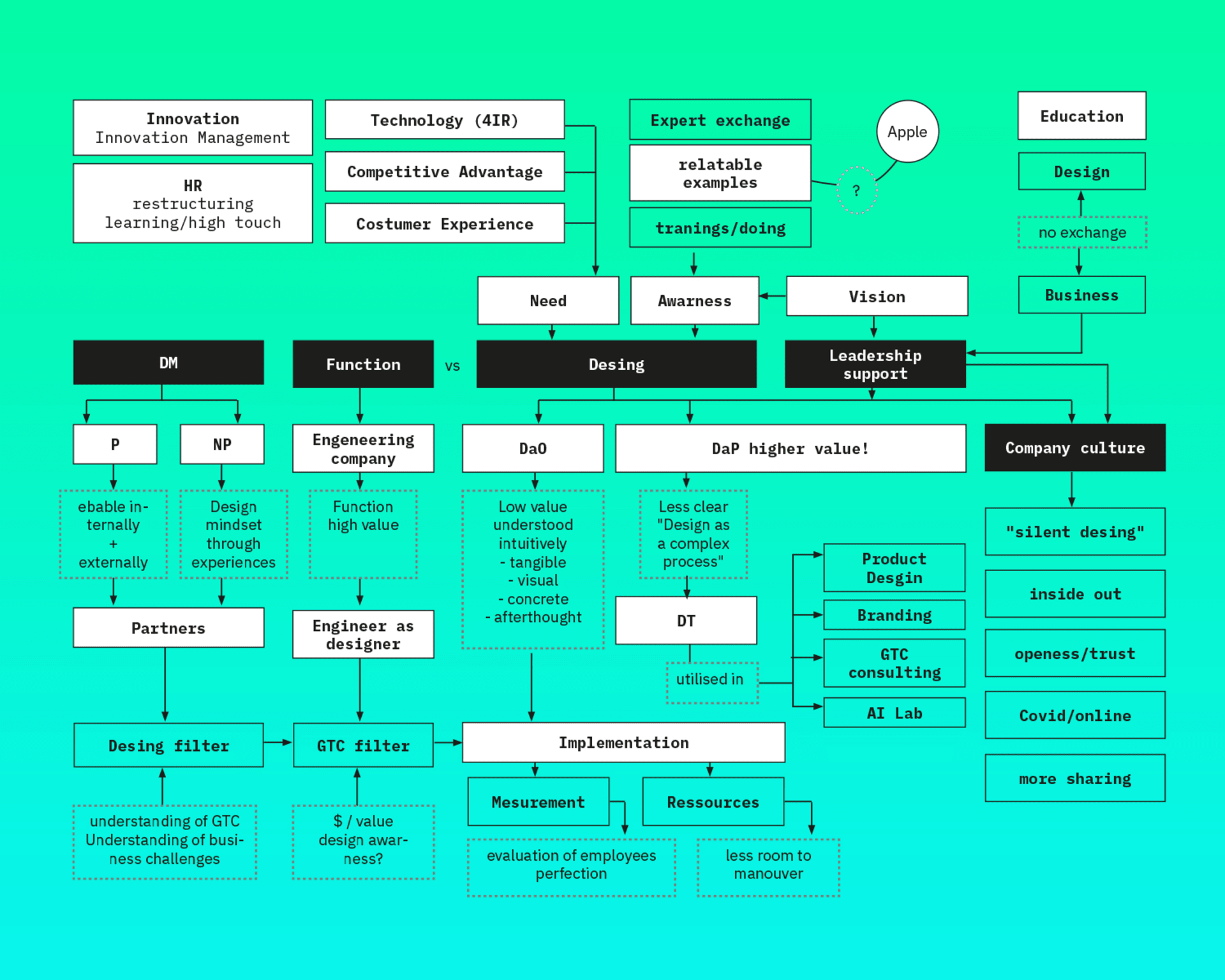
Research Methodology
System analysis as a structuring basis for the discussion part: exploring possible links between interview results and already existing scientific findings.

